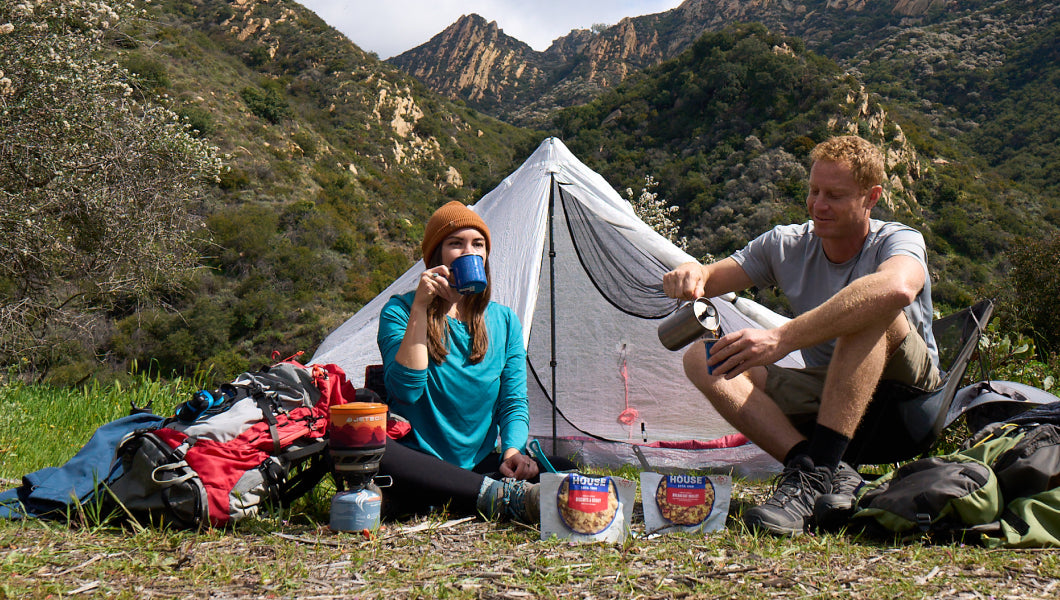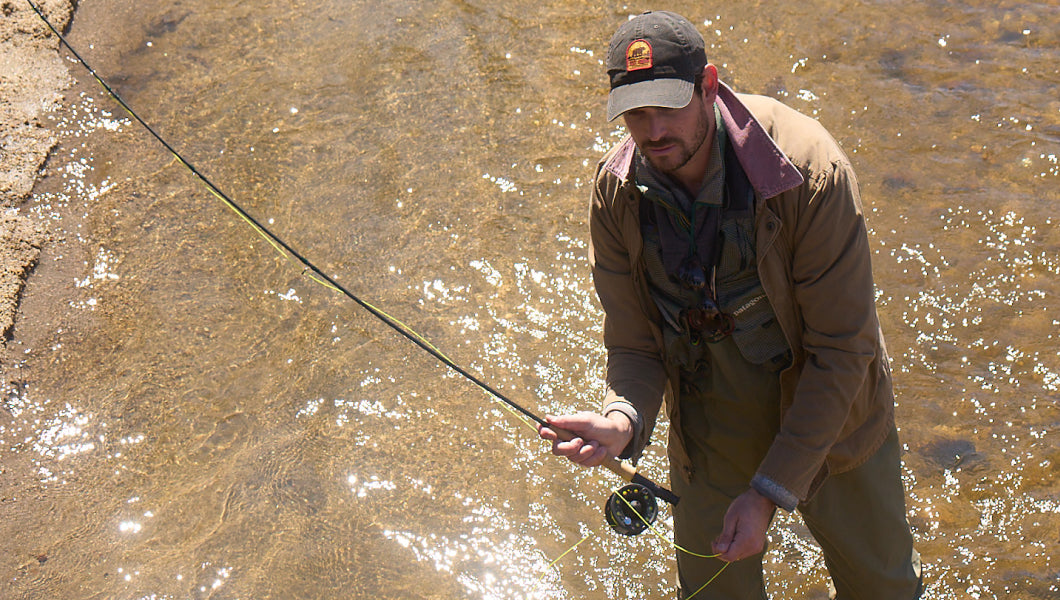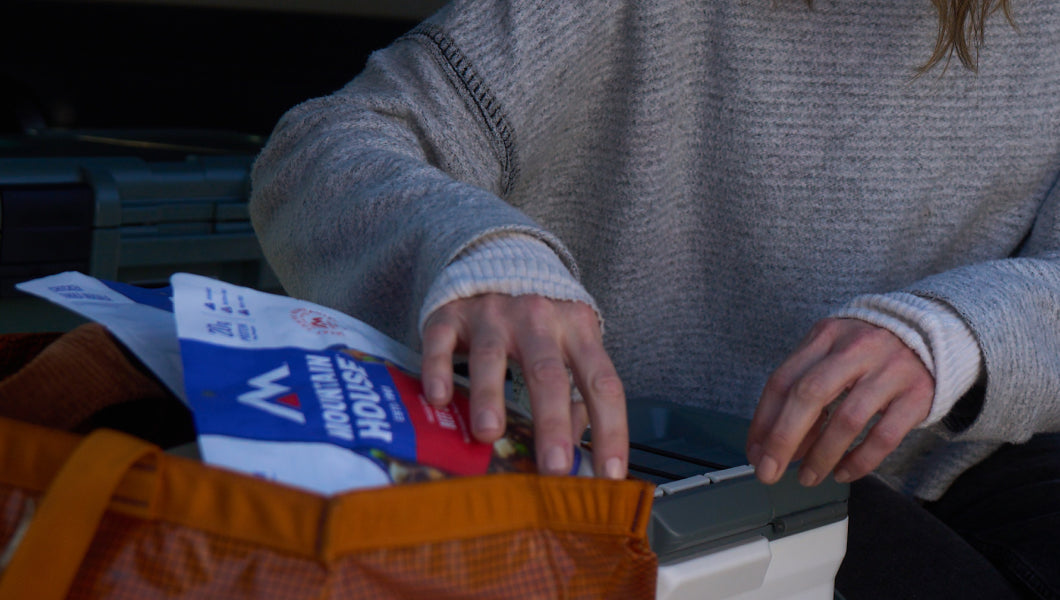Inspired for an Adventure? Check out Beef Stroganoff - Pouch and Beef Stew - Pouch
Free Ground Shipping On All Orders
Over 2,100 Reviews
Add description, images, menus and links to your mega menu
A column with no settings can be used as a spacer
Link to your collections, sales and even external links
Add up to five columns
Add description, images, menus and links to your mega menu
A column with no settings can be used as a spacer
Link to your collections, sales and even external links
Add up to five columns
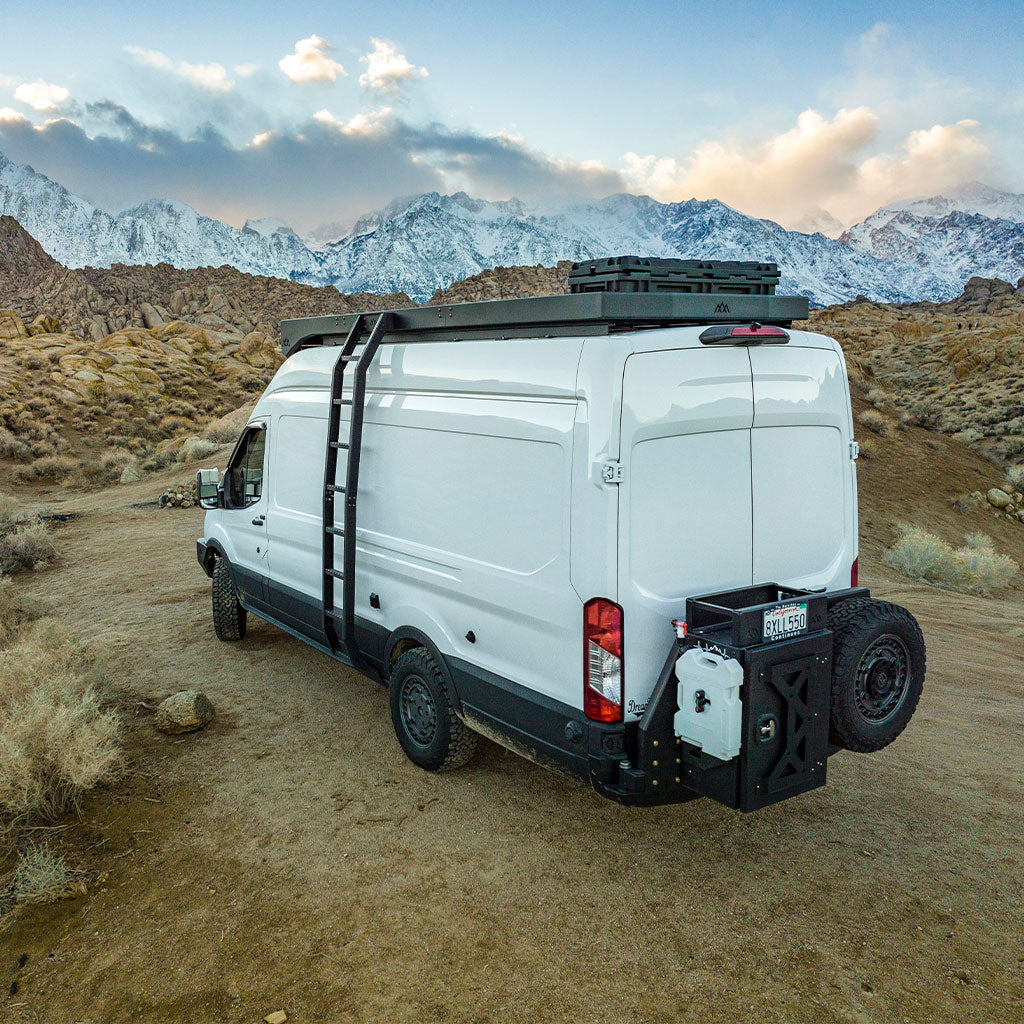
How to Stock Your Campervan Kitchen for a Successful Adventure on the Road
Fueling up for a van adventure is essential, not only for your vehicle but also for your body. Long driving days, seeking out beautiful campsites, and golden hour walks all require energy. And while gas station grabs and fast food may temporarily charge you up, you’ll likely burn out shortly after.
So, how exactly do you fill a van pantry with nourishing sustenance? It’s important to take multiple things into account. Consider what the kitchen and appliances allow for, the size of the refrigerator or cooler, and amount of dry goods storage available. From there, use our best tips and tricks listed below to make meal planning on the road a breeze.
Plan Meals for 1 Week Ahead
The biggest game changer for grocery shopping and stocking a van pantry is meal planning. Not meal prepping, but meal planning. This means outlining all your meals for the next seven days. If you require afternoon snacks, include this! If you know you’ll purchase, take out at least one night, or are meeting friends for a particular meal, also include this. Think of it as a general food overview for the next week.
Once your meals are planned, make a comprehensive list of everything you’ll need to grab at the store before you head out into nature. Use your week of meals as a reference, starting at the beginning of the week and thinking through breakfast, lunch, and dinner for each day. Don’t forget to replenish any general items you may need, such as cooking oil or butter. Bonus points if your grocery list is organized by section: dairy, canned, meat, produce, etc.
Using this weekly strategy not only makes grocery shopping very straightforward, it also helps avoid unnecessary purchases and minimizes food waste. Each week only requires one trip to the store, and you don’t have to go through the “what should I eat tonight” daily cycle.
Clump Meals with Similar Ingredients in the Same Week
It’s very likely that after your week of meals is through, you’ll find yourself with partially used or consumed items. In a normal sized kitchen, this may not be a big deal. But with an exceptionally tiny kitchen and limited pantry storage, it’s problematic. This becomes especially obvious with large vegetables.
Think celery stalks, a head of red cabbage, squash, or a watermelon. These are large in size and may be hard for 1-2 people to consume within a week. If you have any ingredients, you know you won’t finish with a single recipe, plan another meal that calls for those specific ingredients and add it to the week’s schedule. For example, hearty vegetable chicken noodle soup is great to plan the same week as veggie curry or stir fry. Chicken fajitas require tortillas and a lot of similar toppings as roasted chipotle cauliflower tacos.
By simply planning ahead you can avoid lugging around unused food, minimize the risk of expiration, and eliminate food waste. Plus, it often lowers the cost of groceries.
Always Keep a Few Favorite Staples
While you can plan and prep and stay on top of life within a van, inevitably the unpredictable will find you. It may be a busier work week than expected, or maybe it’s that the dirt road to your campsite was actually five miles instead of one. No matter the circumstance, it’s important to have a few quick, nutritious, and filling options in the pantry. Mountain House checks all the boxes.
Their Adventure Meals provide the perfect convenient and nourishing meal, without sacrificing the taste. With just hot water and 10 minutes, you’ll be chowing down on protein-packed cuisine. You can keep it simple and eat straight from the pouch, which also means less dishes for a van kitchen with a limited water supply. Plus, with a shelf life of 30 years, they won’t go bad if you forget a packet or two behind your seat or keep a couple stashed away in storage.
One of my favorite things about Mountain House is that you can add your own personal twist by incorporating your favorite sauces or fresh toppings. My favorite Mountain House pouch is their Classic Spaghetti with Meat Sauce. I always top it off with a bit of shaved parmesan, dried oregano, fresh parsley, and most importantly, red pepper flakes. You can thank me later.
Switch off Between Meatless and Meat-Focused Meals
While van’s have limited pantry space, they often have even more limited refrigerator or cooler space. If needed, you can always put a box of pancake mix behind your seat. But you can’t store uncooked meat just anywhere in your van. It specifically requires fridge or freezer space.
Choosing meat-alternative options is not only great for the planet, but it also has many van-dwelling benefits. The obvious advantage is not having to worry about properly storing meat in a van. There’s no worrying about “use or freeze by” dates or storage temperature control. Additionally, cooking meat requires specific cleaning and sterilizing afterward, which is even more challenging if you don’t have hot water. And lastly, meat is often (not always) the most expensive ingredient in a meal.
Whether you adopt Meatless Mondays, or simply alternate between meat and meatless meals, there are three things that will thank you: the planet, your van, and your wallet.
Plan Versatile Breakfast and Lunch Meals
Being open to foods that can be treated as breakfast, lunch, or snacks is a golden tip. Dinners are usually completely planned out, down to each and every ingredient necessary. Approaching a food plan with items that are great for any meal of the day can often save money, as well as minimize the amount of perished food at the end of each week.
Think neutral but healthy, nutritional grab-and-go options: apples, balances, cucumbers, cheese and crackers, granola bars, almonds, etc. Many of these items can be treated as breakfast, either solely on their own or in combination. They can also serve as a wonderful snack! Most of these food items can be prepared and eaten as a stationary meal, but also be packed into a backpack for a hike. So, whether as lunch or just an afternoon snack, having an array of finger foods is a good idea.
It’s important to remember that adventuring on the road doesn’t have to mean your kitchen or meals are boring. Plan ahead, get creative, and don’t forget to have fun.
About the Author

Katie is a digital nomad based out of Portland, Oregon. She is currently following her philosophy of doing life a little differently by living full-time in her self-converted Transit campervan. Her 62 square foot residence can be spotted around North America, as she continues to explore every nook and cranny of the country.
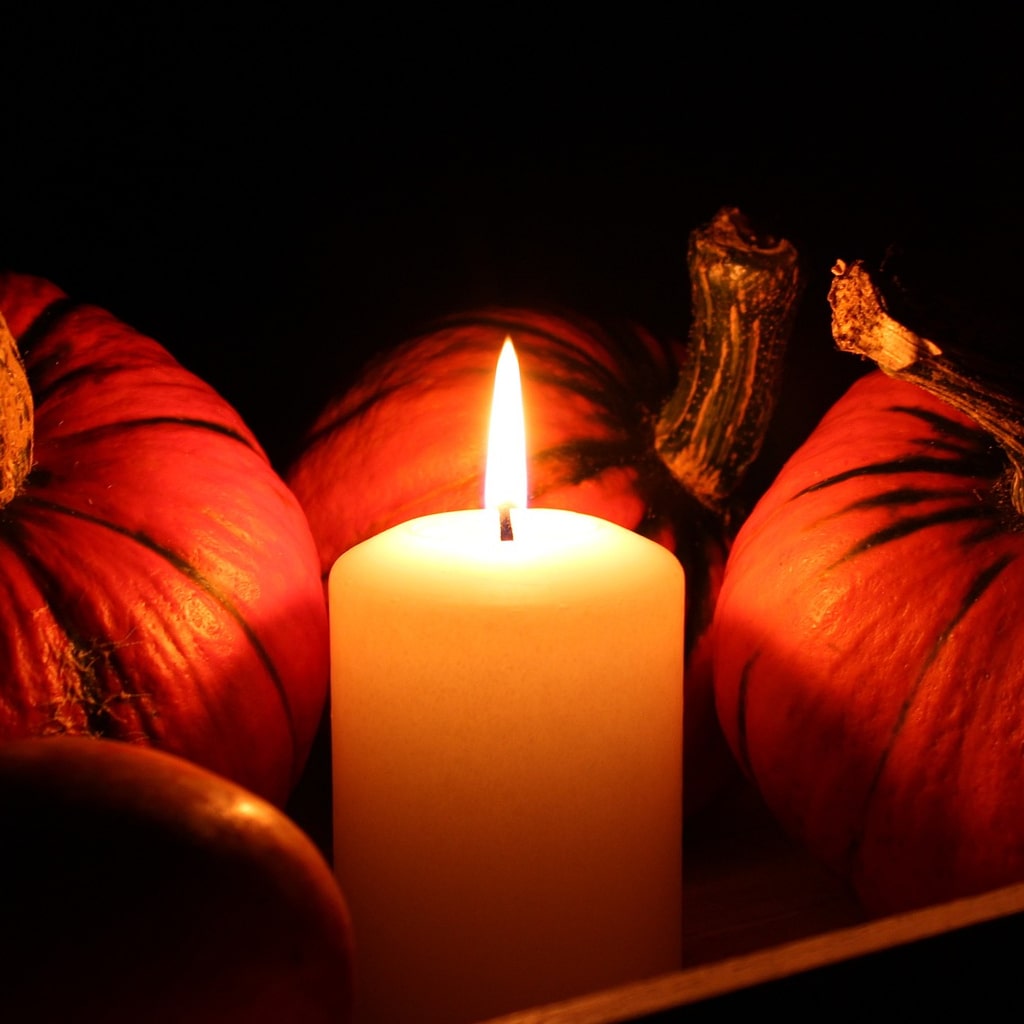
Top 9 RV Halloween Decorating Ideas for Vanlifers

Top 10 Fun Music Festivals With RV Camping in the USA


Stay Hungry for Adventure
Sign Up for Delicious Outdoor Meals & Exclusive Offers!


Join the adventure
©2024 Mountain House — All Rights Reserved.
Your Cart is Empty
Continue ShoppingYour Cart
Subtotal
$0.00
EXPRESS PAYMENT METHODS AVAILABLE IN CHECKOUT
Taxes and Shipping Calculated at Checkout












